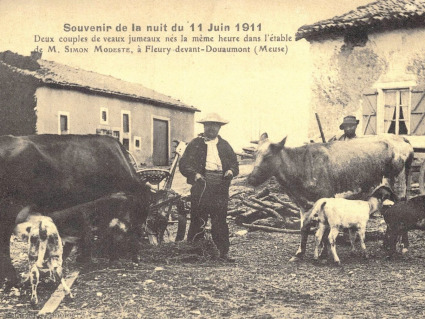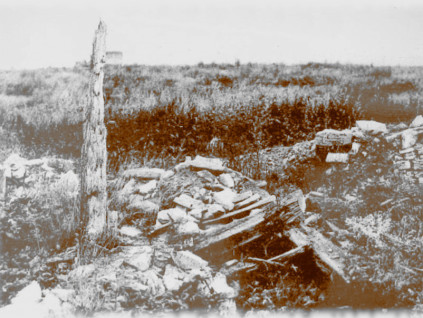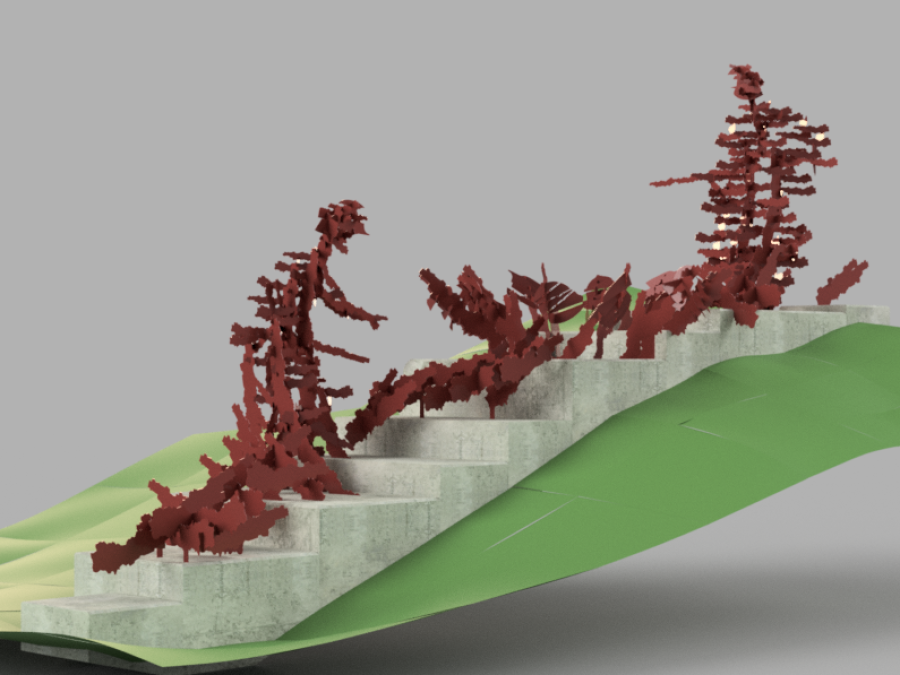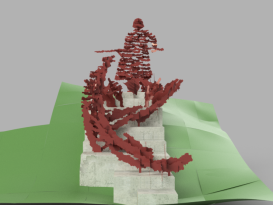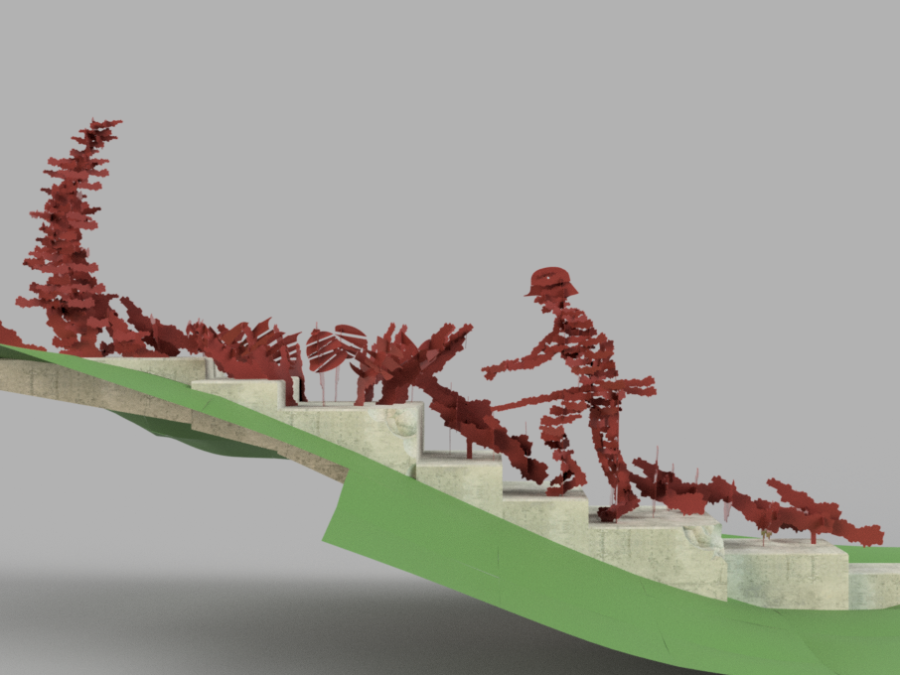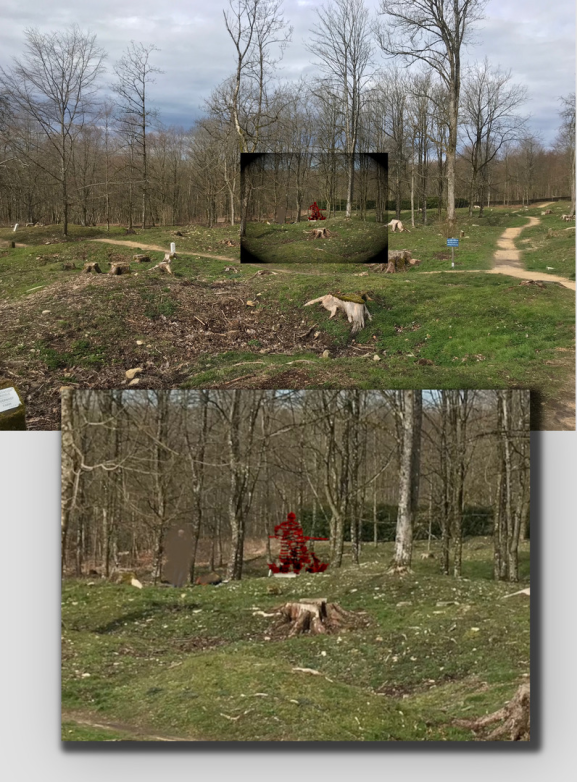Maelstrom
Nous prévoyons d'ériger le monument au printemps 2026.
Wir planen, das Monument im Frühjahr 2026 aufzustellen.
Siehe auch Facebook-Seite
La bataille de Verdun s'abattit sur le paisible village de Fleury-devant-Douaumont comme un grand maelstrom. Un courant puissant qui emporte tout sur son passage, qui tourbillonne et détruit. Il anéantit indistinctement les hommes, le matériel, les bâtiments et le paysage.
Die Schlacht von Verdun kam über das friedliche Dorf Fleury-devant-Douaumont wie ein großer Mahlstrom. Ein mächtiger Strom, der alles mit sich reißt, verwirbelt und zerstört. Er vernichtete Menschen, Material, Gebäude und Landschaft gleichermaßen.
The Battle of Verdun came over the peaceful village of Fleury-devant-Douaumont like a great maelstrom. A mighty torrent that sweeps everything along with it, swirling and destroying. It annihilated people, material, buildings and landscape alike.
Lorsque l'on fait le tour du monument de béton et d'acier, l'impression obtenue change à chaque pas. On voit des flots de fer rouillé - un soldat français apparaît, un soldat allemand disparaît - des casques « dansent » sur le tourbillon central comme des bouchons sur un vortex d'eau. L'escalier irrégulier en béton mène du point le plus bas d'un entonnoir d'obus vers le haut. L'acier et le béton étaient les matériaux les plus importants de la Première Guerre mondiale. L'acier pour attaquer et tuer, le béton pour se protéger
Le monument ne se dresse pas de manière sublime et isolée sur un socle, mais s'intègre harmonieusement dans ce paysage très particulier.
Geht man um das Denkmal aus Beton und Stahl herum, verändert sich der Eindruck mit jedem Schritt. Man sieht fließende Ströme von rostigem Eisen - ein französischer Soldat taucht auf, ein deutscher verschwindet - Helme „tanzen“ auf dem zentralen Wirbel wie Korken auf einem Wasserstrudel. Die unregelmäßige Betontreppe führt von der tiefsten Stelle eines Granattrichters nach oben auf den Rand. Stahl und Beton waren die wichtigsten Materialien im Ersten Weltkrieg: Stahl, um anzugreifen und zu töten, Beton, um sich zu schützen
Das Denkmal steht nicht erhaben und isoliert auf einem Sockel, sondern fügt sich harmonisch in diese ganz besondere Landschaft ein.
Walking around the concrete and steel monument, the impression changes with every step. One sees flowing currents of rusty iron - a French soldier appears, a German one disappears - helmets “dance” on the central vortex like corks on a water vortex. The irregular set of concrete steps leads from the lowest point of a shell hole up to the edge. Steel and concrete were the most important materials in the First World War: steel to attack and kill, concrete to protect oneself.
The monument does not stand sublimely and isolated on a pedestal, but blends harmoniously into this very special landscape.
Acier Corten résistant aux intempéries; 362 éléments individuels; poids total de l'acier 307 kg; 5,5 m3 de béton;
longueur 7,67 m, largeur 0,62 à 1,62 m
